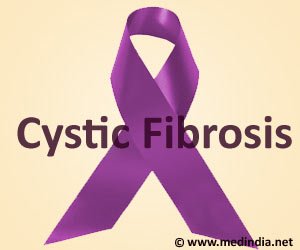Why Is Integrated Structural Biology Important for Cystic Fibrosis?

Structures of CFTR, previously captured in the laboratory of Jue Chen, Ph.D., and colleagues at Rockefeller University, revealed two distinct conformations (shapes). Those static images allowed researchers to see the channel when it is open or when it is closed, but the transition between states has been incompletely understood. Conformational changes were thus inferred to be important for opening and closing the channel, accounting for the electrophysiological properties of CFTR, which have been analyzed for decades.
“Through this collaboration, we had the opportunity to really dial into the relationship between structure and function,” said co-corresponding author Scott Blanchard, Ph.D., St. Jude Department of Structural Biology. “Our lab’s prior work on ribosomes and G-protein coupled receptors had shown this is possible, but there are very few single proteins that are more relevant for the treatment of disease than CFTR because treatments for cystic fibrosis are aimed at ameliorating the defects in the mutant forms of this protein.”
Advertisement
“The ability to make biophysical measurements and get these types of quantitative insights is one of the advances of single-molecular imaging that never ceases to amaze me.”
Collaboration Leads to a Breakthrough
The complementary expertise of the research groups was key to making their discoveries. Through electrophysiology and structural studies, the Rockefeller team was able to guide the placement of single-molecule probes by the St. Jude team. By deploying single-molecule fluorescence resonance energy transfer (smFRET) the St. Jude team was able to provide new insights into the moving pieces of the CFTR machinery. Through the integration of cryo-electron microscopy, electrophysiology and smFRET, the research group was able to draw the connections needed to better understand how CFTR works.
“There is potential here to help cystic fibrosis patients by learning about the structure and behavior of CFTR,” said first author Jesper Levring, Rockefeller University. “Looking at these molecules one at a time using these methods single-channel electrophysiology and smFRET we could correlate the function of the channel with the conformational changes and relate it back to the underlying structural biology.”
What the researchers found is that CFTR exhibits a hierarchical gating mechanism. The two nucleotide-binding domains of the CFTR dimerize (combine) prior to channel opening. Conformational changes within the dimerized channel, related to ATP hydrolysis (a reaction where energy is released), regulate chloride conductance. The significance of this mechanistic insight was further revealed by the finding that the potentiator drugs Ivacaftor and GLPG1837 enhance channel activity by increasing pore opening while the nucleotide-binding domains are dimerized. Mutations that cause cystic fibrosis can reduce the efficiency of the dimerization. These insights will be useful for informing the search for more effective clinical therapies.
“The most satisfying thing about this work is that we have answered a question about how CFTR works that has been a subject of debate in the field for many years,” said Chen, who is co-corresponding author of the study. “Every individual method has limitations, so you can have good data but still not have the answers. By combining approaches, we have gotten to a unified mechanism that gives us insight into how this molecule works. With this understanding we can then test how mutations or drugs affect the function, which is ultimately how we’ll get to better therapeutics.”
Source: Eurekalert
Source link
#Integrated #Structural #Biology #Important #Cystic #Fibrosis



